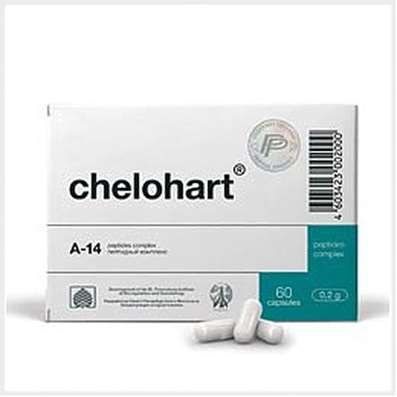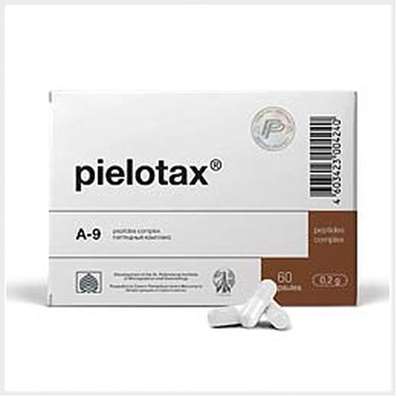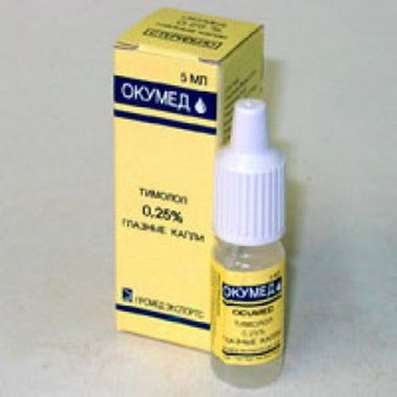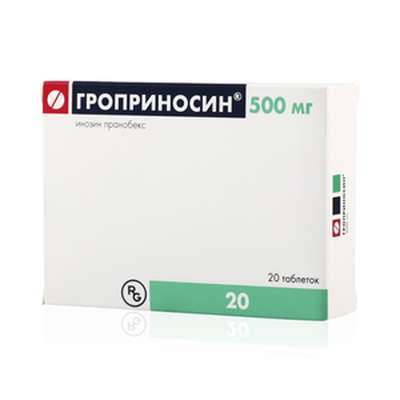Instruction for use: Clozapine
I want this, give me price
The Latin name of the substance Clozapine
Clozapinum (genus. Clozapini)
Chemical name
8-Chloro-11- (4-methyl-1-piperazinyl) -5H-dibenzo [b, e] [1,4] diazepine
Gross formula
C18H19ClN4
Pharmacological group:
antipsychotics
The nosological classification (ICD-10)
F20 Schizophrenia: Schizophrenic conditions; Exacerbation of schizophrenia; Schizophrenia; Chronic schizophrenia; Dementia praecox; Bleuler's disease; Psychotic discordant; Dementia early; The febrile form of schizophrenia; Chronic schizophrenic disorder; Psychosis of the schizophrenic type; Acute form of schizophrenia; Acute schizophrenic disorder; Cerebral Organic Insufficiency in Schizophrenia; Acute attack of schizophrenia; Schizophrenic psychosis; Acute schizophrenia; Sluggish schizophrenia; Sluggish schizophrenia with apathoabulic disorders; Acute stage of schizophrenia with excitation
F30 Manic episode: Manic-depressive disorder; Manic agitation; Manic state; Manic conditions; Manic syndrome; Acute manic syndrome
F31 Bipolar affective disorder: Mood disorders bipolar; Affective bipolar psychosis; Manic-melancholic psychosis; Intermittent psychosis; Circular psychosis; Cyclophrenia; Bipolar disorders; Bipolar psychosis; Affective insanity; Manic-depressive syndrome; Psycho Manic-Depressive; Depressive episode of bipolar disorder
F60.2 Dissocial personality disorder: Antisocial personality; Psychopathic personality; Psychopathy; Psychopathy of an excitable type; Psychopathy and psychopathic conditions; Psychopathy of a hysterical type; Psychopathy with a predominance of anxiety and anxiety; Braking Personality
F60.3 Emotionally unstable personality disorder: Mood swings; Mental lability; Emotional fence; Emotional detachment; Mood Change; Lability of mood; Instability of emotional background; Mixed emotional disorders; The state of emotional stress; Emotional lability; Emotional tension; Emotional instability; Emotional instability; Mood disturbance; Mood disorders; Decreased mood; Deterioration of mood; Mood swings
F91 Behavioral disorders: Juvenile and other behavioral disorders; Destructive behavior; Violation of behavior; Behavioral disorders; Mixed behavioral disorders; Behavioral Disorder; Behavioral disorder in adolescents with 15 years of age and adults; Violations in behavior; Behavioral disorders in childhood; Behavioral disorders in old age; Behavioral disorders in children; Behavior Disorder; Behavioral disorders in children
G47.0 Disorders of falling asleep and maintaining sleep [insomnia]: Insomnia; Insomnia, especially difficulty falling asleep; desynchronosis; Prolonged sleep disturbance; Difficulty falling asleep; Short-term and transient insomnia; Short-term and chronic sleep disorders; Short or shallow sleep; Violation of sleep; Disturbed sleep, especially in the phase of falling asleep; Infringements sleep; sleep disturbances; Neurotic sleep disturbance; Shallow superficial sleep; shallow sleep; Poor quality of sleep; Night awakening; sleep Pathology; Postsomnic violation; transient insomnia; Trouble falling asleep; Early awakening; Early morning awakening; Early awakening; sleep disorder; somnipathy; persistent insomnia; difficult to fall asleep; difficulty falling asleep; Difficulty falling asleep in children; persistent insomnia; Worsening sleep; Chronic insomnia; Frequent night and / or early morning awakening; Frequent nocturnal awakening and a sense of the depth of the non-sleep; Night waking
R45.1 Anxiety and agitation: Agitation; Anxiety; Explosive excitability; Internal stimulation; Excitability; Excitation; Excitation acute; Psychomotor agitation; Hyperexcitability; Motor excitement; Cessation of psychomotor agitation; Nervous excitement; Restlessness; Night trouble; Acute stage of schizophrenia with excitation; Acute mental agitation; Paroxysm of excitation; Overexcitation; Increased excitability; Increased nervous excitability; Increased emotional and cardiac excitability; Increased agitation; Mental arousal; Psychomotor agitation; Psychomotor agitation in psychoses; Psychomotor agitation of an epileptic nature; Psychomotor paroxysm; Psychomotor fit; Symptoms of excitation; Symptoms of psychomotor agitation; The state of agitation; A state of anxiety; Excitation status; A state of heightened concern; The state of psychomotor agitation; Conditions of anxiety; Excitation conditions; The state of excitement in somatic diseases; Excitation level; Feelings of anxiety; Emotional arousal
CAS Code
5786-21-0
Characterization of the substance Clozapine
Atypical antipsychotic. Greenish yellow, fine crystalline powder odorless. Almost nerastvorim in water, it is difficult soluble in ethanol, easily soluble in chloroform. Molecular weight 326.83.
Pharmacology
Pharmacological action - antipsychotic, myorelaxing, neuroleptic, sedative.
It blocks dopamine receptors of the central nervous system and prevents dopamine transmission in the basal ganglia and in the limbic part of the forebrain. Has a weak blocking effect against D1-, D2-, D3- and D5-receptors and expressed - against D4-receptors. Along with antidopaminovym, has central and peripheral cholinoblocking, peripheral alpha-adrenolytic properties, is also an antagonist of histaminergic and serotonergic receptors. Effectively suppresses an excited state, behavioral and mnestic disorders, weakens the acuteness of emotional experiences, aggressiveness and impulsivity of behavioral reactions. Does not affect the higher intellectual functions, almost does not cause extrapyramidal disorders, does not have a cataleptogenic effect.
Quickly and fairly fully absorbed after ingestion. Binding to proteins - 95%. Tmax - 2.5 hours (from 1 to 6 hours). The equilibrium concentration in the blood is reached after 8-10 days and averages 319 ng / ml (102-771 ng / ml). Rapidly distributed in the body, passes through the BBB. It is almost completely metabolized in the liver, metabolites have little or no activity, are excreted by the kidneys (approximately 50%) and feces (about 35%). T1 / 2 is variable, after taking a single dose of 75 mg - 8 hours (4-12 hours); after reaching the equilibrium concentration with the intake of 100 mg twice a day - 12 hours (4-66 hours).
Carcinogenicity, mutagenicity, effects on fertility
In long-term studies in mice and rats, with the administration of doses approximately 7-fold higher than the MPDCH, there was no carcinogenic effect. There was no effect on fertility in rats and rabbits at doses 2-4 times higher than MPDH. Has not exhibited genotoxicity or mutagenicity in a number of tests on bacteria and mammalian cells.
Application of Clozapine
Schizophrenia (including with resistance to therapy with other neuroleptics or their intolerance), manic states, manic-depressive psychosis, psychomotor agitation in psychopathies, emotional and behavioral disorders (including in children), severe sleep disorders.
Contraindications
Hypersensitivity, diseases of the hematopoietic system (including in the anamnesis), alcoholic and intoxicating psychoses, myasthenia gravis, coma, children under 5 years.
Restrictions on the use
Decompensated diseases of the cardiovascular system, severe hepatic and / or renal failure, increased tendency to convulsions, epilepsy, zakratougolnaya glaucoma, prostatic hyperplasia, intestinal atony, intercurrent diseases with febrile syndrome.
Application in pregnancy and lactation
When pregnancy is possible, if the benefit to the mother exceeds the potential risk to the fetus (passes through the placenta).
The action category for fetus by FDA is B.
For the duration of treatment, breastfeeding should be discontinued. Animal studies suggest that clozapine penetrates into breast milk. May cause sedation, decreased ability to suck, motor anxiety, irritability, epileptic seizures, instability of the cardiovascular system in an infant.
Side effects of Clozapine
From the nervous system and sensory organs: dizziness, drowsiness, headache, increased central body temperature, fainting, agitation, akathisia, confusion, disruption of accommodation; rarely - extrapyramidal disorders (akinesia or hypokinesia, rigidity of muscles, tremor), insomnia, sleep disturbance, depression, malignant neuroleptic syndrome (convulsions, shortness of breath or tachypnea, tachycardia or arrhythmia, increased central body temperature, unstable blood pressure, increased sweating, involuntary urination, severe muscle stiffness, pallor of the skin, excessive fatigue or weakness), epileptic seizures, tardive dyskinesia.
From the genitourinary system: urinary retention, decreased potency.
On the part of the intestine: hypersalivation, nausea, vomiting, heartburn, dryness of the oral mucosa.
From the cardiovascular system and blood (blood, gemostaz): a decrease in blood pressure (including orthostatic hypotension); granulocytopenia, up to agranulocytosis (the first signs of agranulocytosis may be symptoms resembling the flu: chills, fever, sore throat, inflammation of the gums and mucous membranes of the mouth, dull wounds, furunculosis, exacerbation of chronic or latent foci of infection - tonsillitis, periostitis, pyoderma) , leukopenia, thrombocytopenia; less often - an increase in blood pressure, tachycardia, a flattening of the T wave on the ECG.
Other: increased sweating, myasthenia gravis, weight gain.
Interaction
Clozapine enhances the effect of sedatives, narcotics, analgesics and hypnotics, alcohol, weakens - levodopa and other dopaminomimetics. Suction from the intestine worsens with the use of gel-structural antacids and colestyramine. With simultaneous use with drugs that cause arterial hypotension, additive hypotensive effect is possible, with anticholinergic drugs - an increase in anticholinergic action. When clozapine is used with agents that cause myelodepression, the oppressive effect on bone marrow hematopoiesis is enhanced. Clozapine is incompatible with drugs that cause agranulocytosis: carbamazepine, co-trimoxazole, chloramphenicol, penicillamine, sulfonamides, pyrazolone analgesics. When used simultaneously with digoxin or LS, characterized by high binding to proteins (including heparin, warfarin, phenytoin), it is possible to increase their concentration in the blood plasma, as well as the displacement of clozapine by these drugs from the sites of its binding to proteins. With simultaneous application with valproic acid - a change in the concentration of clozapine in the blood plasma, while the clinical manifestations of interaction are virtually absent. With simultaneous application with caffeine, clozapine concentration in the blood plasma increases, it is possible to increase the incidence of side effects. With simultaneous use with lithium preparations, myoclonus, convulsions, malignant neuroleptic syndrome, delirium, psychosis are possible. With simultaneous application with risperidone, an increase in the concentration of clozapine in the blood plasma is possible due to the inhibition of its metabolism. With rapid replacement of clozapine with risperidone, dystonia may develop. Rifampicin can increase the rate of clozapine metabolism by inducing the isoenzymes CYP1A2 and CYP3A. With simultaneous use with fluoxetine, paroxetine, sertraline, fluvoxamine, an increase in the concentration of clozapine in the blood plasma is possible, which in some patients is accompanied by manifestations of toxicity. With simultaneous use with ciprofloxacin, an increase in the concentration of clozapine in the blood plasma is possible.
Overdose
Symptoms: deafness, drowsiness, co-morbidity, respiratory depression, coma, delirious disorders, development of large epileptic seizures, anxiety, agitation, lability of body temperature, tachycardia, decreased blood pressure, cardiac arrhythmia, collapse, atony of the intestine.
Treatment: gastric lavage with the appointment of sorbents, maintenance of respiratory and cardiovascular function, control of electrolyte balance and acid-base state; symptomatic therapy. For 4 days after the disappearance of the symptoms of poisoning, the patient is monitored because of possible late complications. Peritoneal dialysis or hemodialysis are ineffective.
Routes of administration
Inside.
Precautions for the substance Clozapine
Agranulocytosis. Because of the significant risk of agranulocytosis - a potentially life-threatening complication (see "Side effects") - clozapine should be used only in patients with schizophrenia who are resistant to previous therapy, i.e. which have no effect from the use of classical antipsychotics or are noted for their intolerance. Before starting clozapine treatment, you need to make sure that the white blood counts are normal. During the treatment period it is necessary to regularly determine the number of leukocytes and, preferably, the absolute number of neutrophils (weekly for the first 18 weeks, then at least 1 time per month throughout the course and 1 month after the end of treatment). When granulocytopenia appears, treatment is immediately stopped.
Epileptic seizures (see "Side effects"). Clozapine dose-dependent way reduces the threshold of convulsive readiness and can cause myoclonic muscle contractions or generalized convulsive seizures. The occurrence of these symptoms is more likely with a rapid increase in the dose of the drug and in patients with epilepsy. In this case, reduce the dose and, if necessary, adjust anticonvulsant therapy.
Myocarditis. Analysis of the post-marketing database suggests that the use of clozapine is associated with an increased risk of fatal myocarditis, especially in the first month of treatment. In patients with suspected myocarditis, clozapine treatment should be stopped immediately.
Other adverse cardiovascular and respiratory effects (see "Side effects"). In the treatment of clozapine, orthostatic hypotension may be noted with or without syncope. Rarely, collapse can be very serious and accompanied by a stopping of breathing and / or cardiac arrest. Orthostatic hypotension is usually noted during the initial dose titration due to its rapid increase. Caution is needed in patients who took benzodiazepines or other psychotropic medications because they experienced collapse, initial breathing, and cardiac arrest during initial treatment.
Increased mortality in elderly patients with psychosis associated with dementia. In elderly patients with psychosis associated with dementia, in the treatment of antipsychotic drugs, the risk of death is increased. An analysis of 17 placebo-controlled trials (lasting 10 weeks) in patients taking atypical antipsychotics revealed a drug-related death risk that was 1.65 times greater than that in the placebo group. During a typical 10-week controlled study, the percentage of drug-related deaths was 4.5, while in the placebo group, it was 2.6. Although the causes of death were varied, most of the deaths seemed to be associated with either cardiovascular (cardiac failure, sudden death) or with infectious (pneumonia) complications. Observational studies show that, as with the use of atypical antipsychotic drugs, and when treated with traditional antipsychotic drugs, mortality can be increased. How much the increase in mortality in observational studies can be attributed to the action of antipsychotics, and how much to the status of the patients themselves remains unclear. However, clozapine is not approved for the treatment of psychosis in patients with dementia.
During treatment, you should not drive vehicles or perform work that requires increased attention and rapid mental and motor reaction.

 Cart
Cart





